Choosing the right turf for your lawn can be a challenge, especially in a state as vast and ecologically diverse as Texas. From the humid Gulf Coast to the dry deserts of West Texas, the climate can vary dramatically across the state. That’s why understanding the types of grass in Texas is crucial for achieving a healthy, sustainable, and beautiful lawn.
Each region of Texas benefits from specific grass varieties that thrive under local conditions. The types of grass in Texas range from drought-tolerant warm-season grasses like Bermuda and Buffalo Grass to shade-tolerant species like St. Augustine and Tall Fescue. Lawn success often depends on matching the grass type to soil quality, sun exposure, and water availability.
This article provides a detailed look at 14 popular types of grass in Texas, complete with images and identification tips. By exploring the unique features and care requirements of each grass type, you’ll be better equipped to select the perfect option for your landscape—no matter which part of Texas you call home.
Different Types of Grass in Texas
Bermuda Grass (Celebration Bermuda)
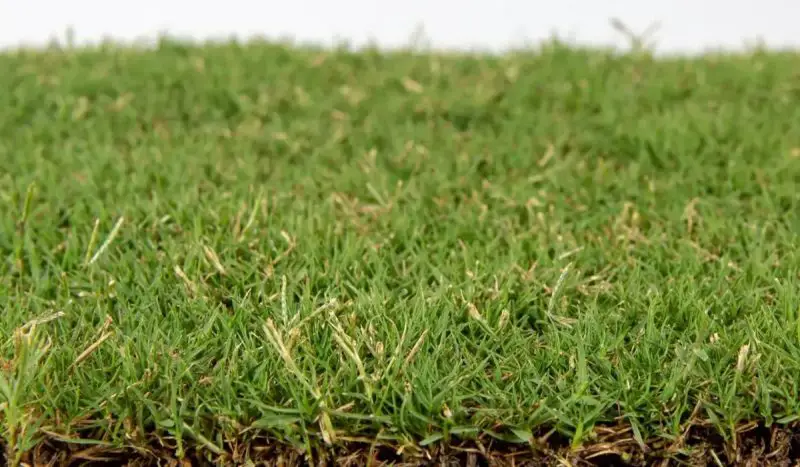
Celebration Bermuda grass is a highly sought-after turfgrass variety that thrives across much of Texas. Known for its dense, fine-textured blades and deep green color, this warm-season grass is particularly well-suited to full-sun areas and handles foot traffic extremely well. It’s often the go-to choice for sports fields, golf courses, and residential lawns in the southern parts of the state.
This grass requires a sunny location to grow optimally, as even partial shade can hinder its development. It establishes quickly from sod and needs regular mowing to maintain a tidy, uniform appearance. Watering should be done deeply but infrequently to encourage drought resistance, and fertilization during the growing season helps keep the lawn lush.
Bermuda grass is ideal for Texas landscapes where durability is a priority. Its excellent wear tolerance makes it perfect for active households with kids and pets. While not suitable for shaded yards, its resilience and ability to recover quickly from stress make it a practical and attractive groundcover for open, sunny spaces.
Bent Grass (Creeping Bentgrass)
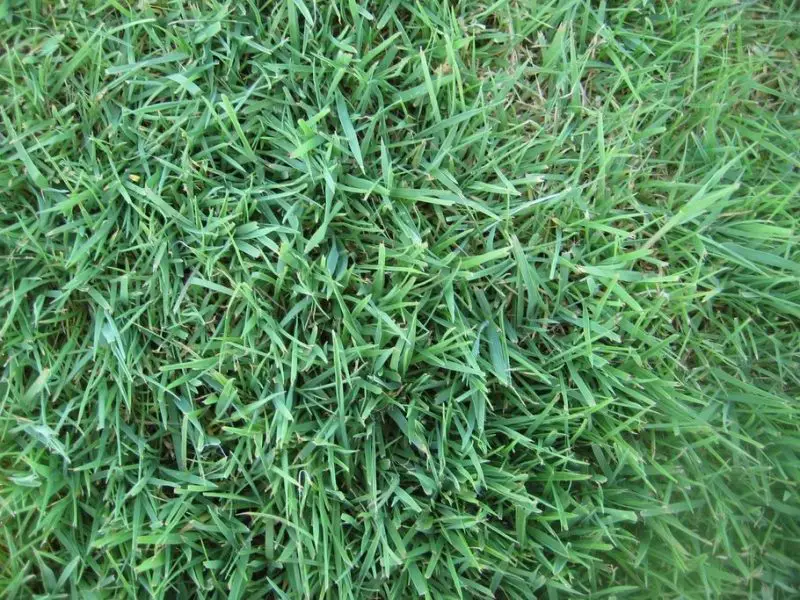
Creeping bentgrass is a cool-season grass primarily used on golf course greens and fairways, especially in northern Texas. It features fine blades and a soft, carpet-like feel, which creates a visually appealing, professional-quality turf. This grass spreads via stolons, allowing it to form a dense mat over time.
While creeping bentgrass has a high tolerance for both drought and shade, it requires meticulous care to maintain its beauty. It needs frequent mowing, precise irrigation, and specialized maintenance routines that go beyond the capabilities of most homeowners. For this reason, it’s typically reserved for commercial applications rather than home lawns.
In landscaping, bentgrass is best used where aesthetics and playability matter most, such as putting greens or ornamental turf areas. It is not recommended for general-use lawns due to its high upkeep needs. However, when cared for properly, it provides a stunning and luxurious lawn surface.
Buffalo Grass
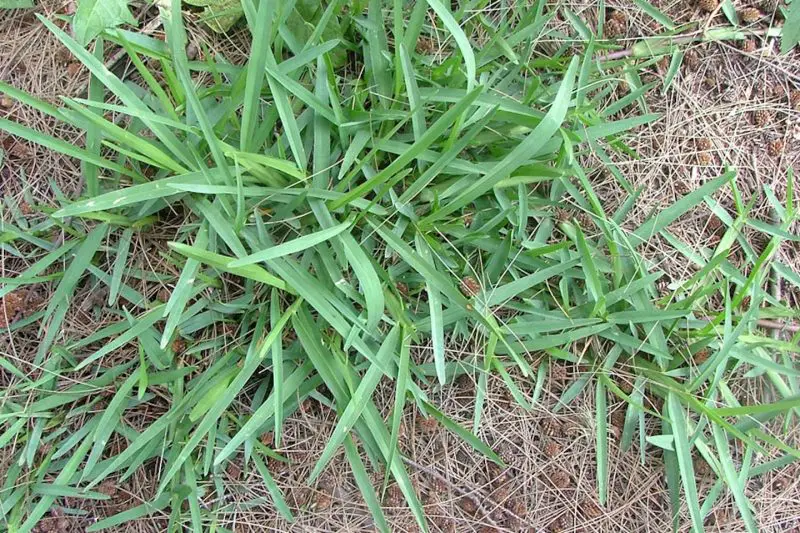
Buffalo grass is one of the few turfgrass species native to Texas, making it a sustainable and regionally appropriate choice. It has a soft, gray-green hue and grows to a moderate height, providing a natural, prairie-like appearance. This grass performs best in dry climates with minimal rainfall and is adapted to the clay-rich soils of western and central Texas.
It is a low-maintenance option that thrives with minimal irrigation and little fertilizer. However, buffalo grass is highly sensitive to both shade and traffic, making it unsuitable for areas with dense trees or frequent use. It spreads by stolons and can take some time to establish fully, but once mature, it is highly drought-tolerant.
In landscaping, buffalo grass is ideal for large, open spaces where a natural aesthetic is preferred. It’s a good fit for eco-friendly lawns, xeriscaping, and regions where water conservation is essential. Though not suited for playgrounds or shaded yards, its native status makes it an excellent choice for sustainable Texas landscapes.
Carpetgrass

Carpetgrass is a warm-season grass that thrives in moist, poorly drained areas and is commonly found along the Gulf Coast. Its wide, coarse blades give it a somewhat rugged look, and it tends to remain green through much of the growing season. Though not the most elegant turf option, it offers reliability in regions where few grasses thrive.
This grass establishes easily in wet, acidic soils and requires minimal care once rooted. It tolerates occasional mowing and needs only moderate sunlight, though it does best in partially sunny areas. Fertilization is rarely necessary, and irrigation should mimic its native damp environment for best results.
Carpetgrass is frequently used in low-lying lawns, drainage areas, or coastal properties where water accumulates. Its primary value lies in its adaptability rather than appearance, making it a good utility turf for difficult locations. For homeowners dealing with soggy soil, carpetgrass can be a practical solution to establish stable, living groundcover.
Centipede Grass
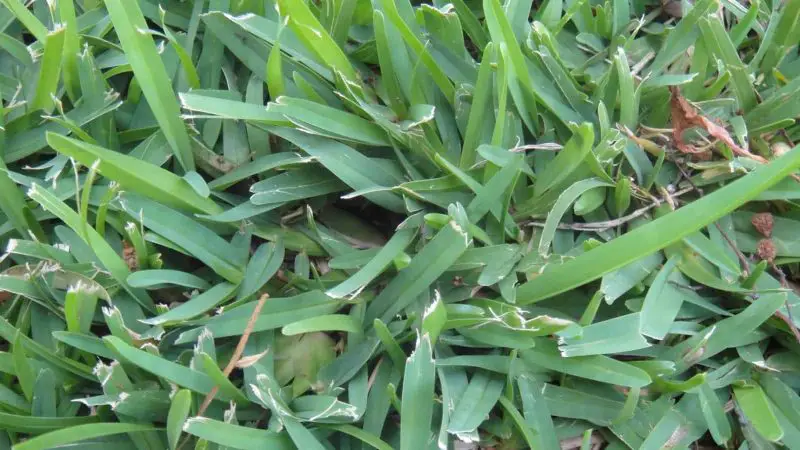
Centipede grass is a low-maintenance warm-season grass that thrives in the acidic soils and humid climate of East Texas. With its medium-textured blades and light green hue, it establishes a uniform lawn with minimal effort. It’s especially appreciated for its ability to grow in partial shade, which makes it a reliable choice for tree-lined neighborhoods.
One of the standout qualities of centipede grass is its minimal care requirements. It grows slowly, so mowing is infrequent, and it naturally suppresses weeds, reducing the need for herbicides. However, its poor tolerance to drought and foot traffic limits its usefulness in high-activity areas or regions with inconsistent rainfall.
This turfgrass is best suited for residential lawns that receive moderate moisture and limited use. It adds value to landscape designs where a tidy appearance is desired without heavy maintenance. Ideal for shaded yards and quiet garden spaces, centipede grass is a dependable groundcover for homeowners seeking simplicity and greenery.
Kentucky Bluegrass
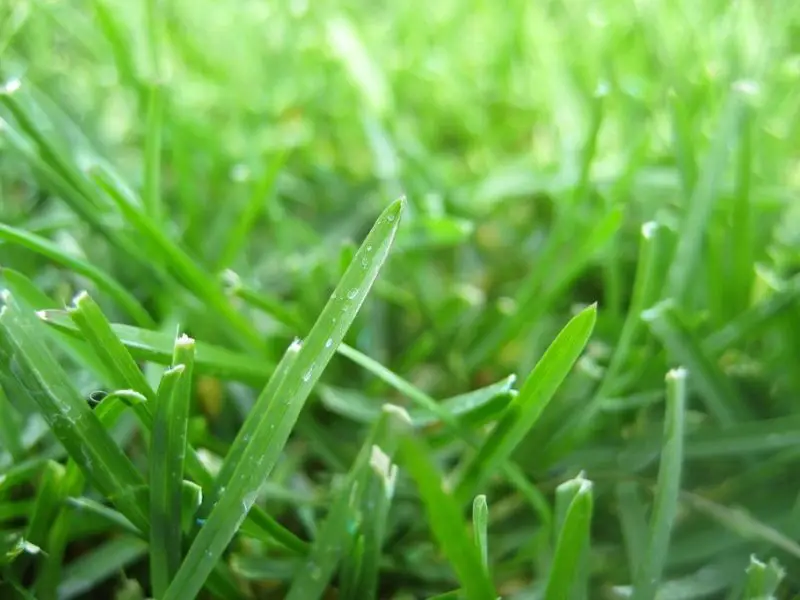
Kentucky bluegrass is a cool-season grass valued for its lush, dense growth and soft blue-green color. While most of Texas is too warm for this species to thrive, it performs reliably in the cooler, drier climate of the Texas Panhandle. Its fine texture and vigorous spreading habit make it a favorite among lawn enthusiasts.
This grass is well-known for its ability to recover quickly from wear due to its underground rhizomes. It also offers moderate shade tolerance and can be blended with other grasses, like tall fescue, to create a more resilient and adaptable lawn. However, it requires consistent watering and care to maintain its health, especially during hot spells.
Kentucky bluegrass is ideal for manicured lawns, recreational fields, or ornamental gardens in Texas’ northernmost regions. Its visual appeal and ability to withstand moderate use make it a suitable option for areas where cooler temperatures prevail. For homeowners in the Panhandle looking for a classic, refined lawn, this grass is a strong contender.
Ryegrass
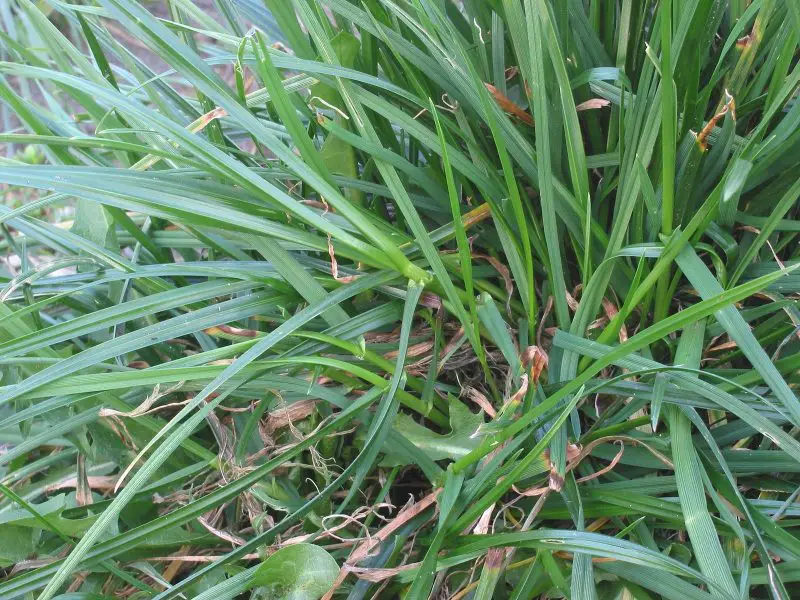
Ryegrass, available in both annual and perennial forms, is a fast-germinating grass commonly used for seasonal lawns or overseeding in Texas. Its bright green blades offer quick coverage, making it a temporary but effective solution for winter color or soil stabilization. While often seen as a short-term fix, it plays a vital role in many lawn care routines.
This grass establishes rapidly and is often used to overseed dormant Bermuda grass during the cooler months to maintain a green lawn through winter. Though it grows quickly and looks attractive, ryegrass struggles with Texas’ extreme heat and requires consistent irrigation, particularly in drier areas. Annual varieties, in particular, have a short life span and must be reseeded each season.
In landscape use, ryegrass is excellent for erosion control, temporary groundcover, and cool-season overseeding. It’s also found in pastures and utility areas where fast coverage is necessary. For longer-term use, it performs best in northeast Texas but still demands regular watering to stay viable through the warmer months.
Seashore Paspalum
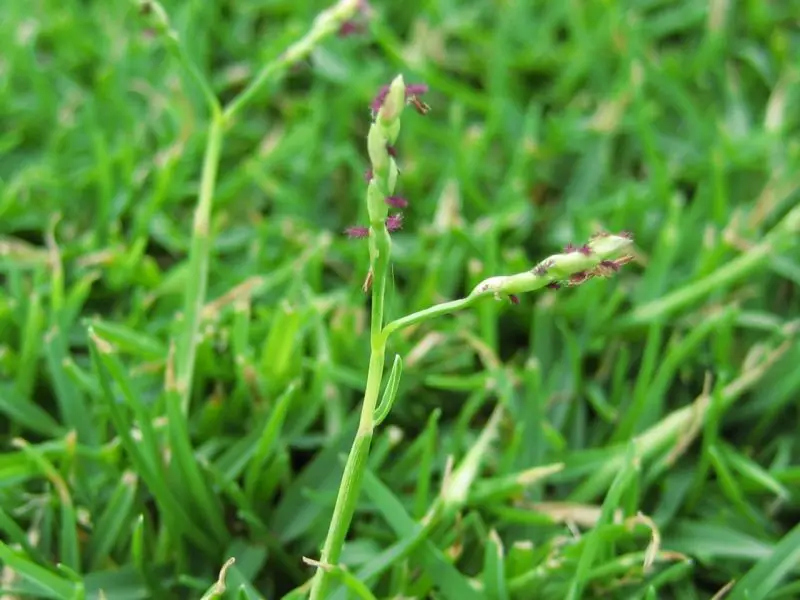
Seashore paspalum is a salt-tolerant warm-season grass that thrives in the coastal regions of southern Texas. It’s particularly well-suited for lawns where irrigation with brackish or reclaimed water is common. With a fine texture and soft green color, it resembles Bermuda grass but offers slightly better shade tolerance.
This grass grows well in sandy, saline soils where other turf species typically fail. It requires frequent mowing and moderate watering to maintain a dense, healthy appearance. However, it is sensitive to cold temperatures and struggles when nighttime lows consistently fall below 50°F, limiting its range to the warmer parts of the state.
In landscaping, seashore paspalum is perfect for beachside properties, golf courses, and waterfront homes. It brings a lush, resort-like feel to yards in salty environments and is a practical solution where soil and water salinity would prevent other grasses from surviving. Its adaptability to salt makes it a niche but valuable turfgrass for Texas’ coastal regions.
St. Augustine Grass

St. Augustine grass is one of the most dependable warm-season grasses for shaded environments, making it a go-to choice for homes with trees or buildings that limit direct sunlight. Among the various cultivars, Raleigh St. Augustine is particularly well-suited for Texas’ conditions, especially in the humid eastern part of the state. Its broad blades and rich green color create a dense, carpet-like lawn with minimal effort.
This grass variety excels in shaded areas but comes with a few care challenges. While it is relatively low-maintenance compared to other turf options, it does need regular irrigation in drier regions. In areas outside of East Texas, you’ll need to supplement rainfall with frequent watering to maintain a lush, healthy lawn. Fertilization in spring and early summer is also beneficial to support its dense growth.
St. Augustine grass is ideal for ornamental lawns, backyard spaces, or any area that receives partial sunlight throughout the day. However, it is not particularly cold-hardy, and homeowners in North or West Texas may find themselves repairing patches after harsh winters. Despite this, for shaded and humid environments, it remains one of the best landscape grass choices available.
Tall Fescue

Tall fescue is a cool-season grass with a reputation for versatility, especially in the transitional climates of northern Texas. It features upright, coarse blades and a clumping growth pattern that provides a textured, attractive lawn. Homeowners in regions with cooler summers appreciate its ability to remain green when warm-season grasses go dormant.
While it tolerates moderate drought and partial shade, tall fescue struggles under intense summer heat, which can be a limiting factor in much of Texas. For this reason, it is often mixed with warm-season varieties such as Bermuda grass to ensure year-round lawn coverage. This blend allows tall fescue to dominate in cooler months, while heat-loving grasses take over during summer.
Recent breeding efforts have led to the development of improved tall fescue cultivars, offering enhanced resistance to drought and better adaptation to varying soil conditions. This makes it an increasingly popular choice for residential lawns, school grounds, and community parks in North Texas. It’s best used in well-drained areas where it can benefit from occasional watering and minimal foot traffic.
Texas Bluegrass
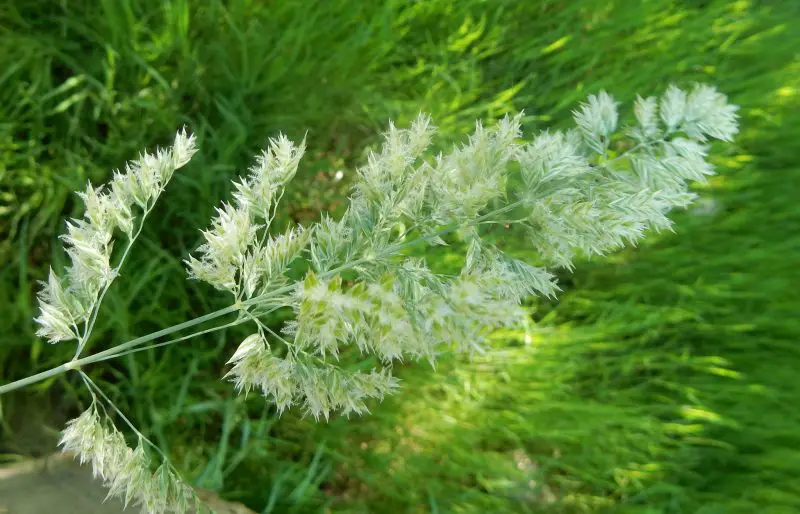
Texas bluegrass is a hybrid turfgrass developed to combine the lush appeal of Kentucky bluegrass with the toughness needed to survive Texas’ more challenging climate. This grass is a relatively new player in the turf world, offering an exciting option for homeowners who want a cool-season lawn with better adaptability. It looks nearly identical to Kentucky bluegrass, with soft, deep green blades and a fine texture.
Unlike traditional bluegrass, Texas bluegrass handles heat and drought more effectively, performing reliably in a wider range of Texas environments. Its growth habit is similar to that of tall fescue, making it suitable for lawns that receive a mix of sun and shade. Since it’s not yet widely available, sourcing seed or sod may require a little extra effort or planning.
Texas bluegrass works well for residential lawns and recreational spaces that demand visual appeal and reasonable durability. It doesn’t require as much water as Kentucky bluegrass and can bounce back more readily from heat stress. For homeowners in transitional regions of Texas seeking a cool-season lawn alternative, this grass offers a promising middle ground.
Zoysia Grass
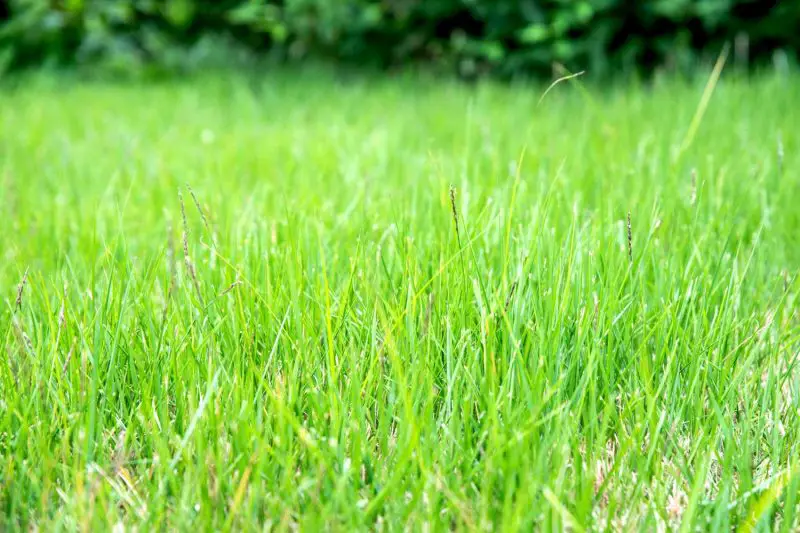
Zoysia grass is considered one of the most balanced and adaptable turfgrasses for Texas landscapes. With its soft texture, medium-fine blades, and dense growth, it creates a beautiful lawn that can handle both form and function. Palisades Zoysia, a popular cultivar, is particularly known for its ability to grow well in a range of soil types and moisture levels.
This grass performs moderately well under shade, drought, and cooler temperatures, making it suitable for nearly all regions of Texas except the driest western areas. It’s slow to establish but once rooted, requires less frequent mowing and fertilizing than many warm-season species. Zoysia also stands up well to moderate foot traffic, making it ideal for both home lawns and shared green spaces.
In landscape use, Zoysia grass is prized for its versatility and resilience. Whether planted in sunny yards, near patios, or in semi-shaded zones, it maintains a uniform appearance with proper care. It’s an excellent choice for homeowners looking for an all-purpose lawn that delivers consistent performance across varied growing conditions.
Buffalograss
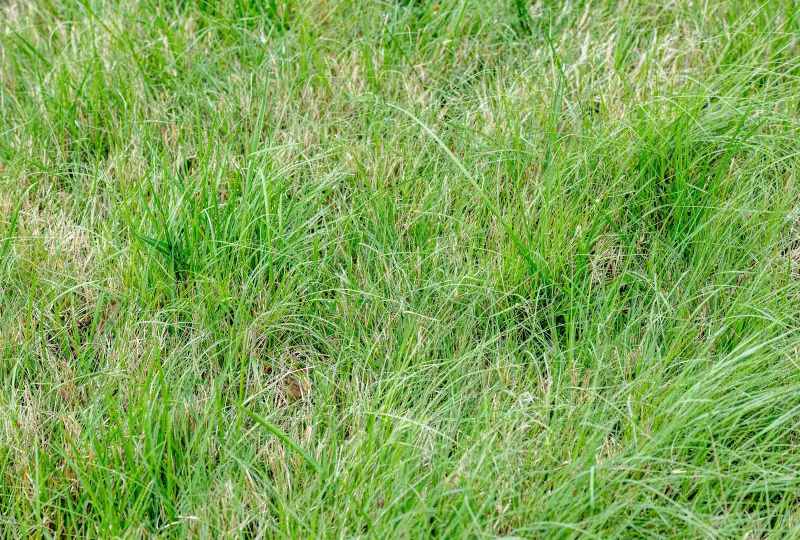
Buffalograss (Bouteloua dactyloides) is a native warm-season turfgrass that thrives across the plains and dry regions of Texas. It has a fine texture, gray-green to blue-green coloring, and grows to a modest height, making it ideal for low-maintenance landscapes. As one of the only truly native turfgrasses to the state, it’s well-adapted to the hot, dry summers and limited rainfall found in Central and West Texas.
Buffalograss prefers full sun and well-drained, clay or sandy soils. It performs poorly in shade and does not tolerate heavy foot traffic, so it’s best for low-traffic residential lawns or large open spaces. While it grows slowly compared to other turfgrasses, it requires less mowing, fertilizing, and watering, making it highly appealing for water-conscious homeowners.
This grass is excellent for sustainable landscaping or xeriscaping projects. It’s commonly used in eco-lawns, public parks, and large-acreage areas where low input is a priority. Buffalograss also plays a valuable role in erosion control and is often included in native wildflower and prairie mixes to restore natural habitats.
Bahia Grass

Bahia grass (Paspalum notatum) is a tough, drought-tolerant grass originally native to South America. It’s now widely used in the southeastern United States, including parts of East Texas. With deep roots and a coarse texture, Bahia grass is well-suited to sandy or infertile soils and performs best in full sunlight. It has a light to medium green color and tends to form an open, upright growth pattern.
Bahia grass grows quickly and can survive with minimal watering and fertilization, making it a good candidate for utility lawns and rural properties. However, it produces tall, unsightly seedheads that emerge frequently in the growing season, requiring consistent mowing for aesthetic purposes. It is also not very shade-tolerant and does not produce a particularly thick or lush lawn compared to other species like Zoysia or St. Augustine.
This grass is ideal for large properties where durability and low maintenance are more important than visual perfection. It’s frequently used for pasturelands, erosion control, and roadside applications. In East Texas, Bahia grass can be a practical option for landowners looking for a resilient and easy-to-care-for turf solution.






